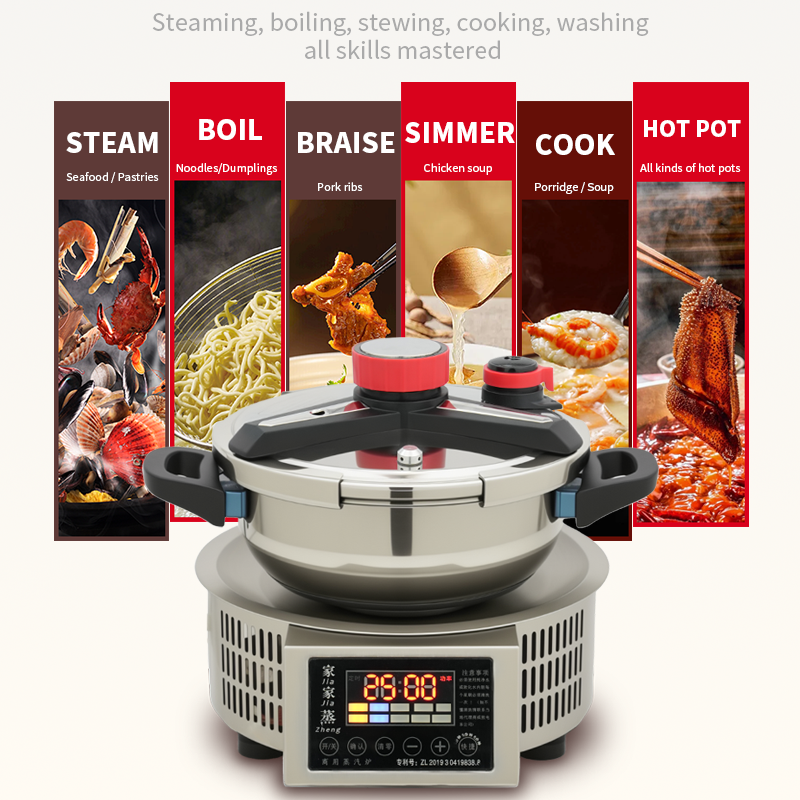In the industrial sector, small steam boilers, as efficient and compact thermal energy machinery, are becoming essential equipment in industries such as food processing, pharmaceuticals, and laboratories. They generate steam by burning fuel or electricity, meeting the needs of small and medium-sized production, offering energy-saving, environmentally friendly, and flexible operation. This article will provide an in-depth analysis of their current market status and future trends, and will provide comprehensive reference by combining practical examples and frequently asked questions.
I. The Core Value of Small Steam Boilers
Small steam boilers generally refer to boilers with an evaporation capacity of 0.5-10 tons/hour. They are suitable for applications with limited space and moderate steam demand.
High Efficiency and Energy Saving: Small steam boilers can achieve thermal efficiencies exceeding 90%, saving 20%-30% more energy than traditional boilers.
Flexible Installation: The modular design adapts to diverse environments, including factories, hospitals, and laundries.
Environmentally Friendly and Low Emissions: They comply with national environmental standards and support clean energy sources such as gas, electricity, and biomass.
II. Market Analysis of Small Steam Boilers
The global small steam boiler market continues to grow. According to Statista, the market size is expected to reach US$4.8 billion in 2023, with a compound annual growth rate of approximately 6.5%. As a major producer and consumer, China exhibits the following characteristics:
Application Areas of Small Steam Boilers:
Food processing (sterilization, steaming) accounts for 35%
Pharmaceutical industry (equipment disinfection) accounts for 25%
Textile washing (ironing and shaping) accounts for 20%
Regional Distribution: 60% of demand is concentrated in the Yangtze River Delta and Pearl River Delta, with significant growth in the central and western regions.
Representative Brands: Bosch and Siemens (international); Shuangliang Boiler and Zhongzheng Boiler (domestic).
III. Future Development Trends of Small Steam Boilers
Intelligent Upgrades
IoT technology enables remote monitoring and automatic steam pressure adjustment, reducing labor costs.
Green Energy Transition
Demand for biomass boilers is increasing by 15% annually, and policies are promoting the replacement of coal-fired boilers with electric boilers.
Modular Customization
Combining multiple small boilers on demand allows for flexible response to production capacity fluctuations and reduces maintenance costs.
IV. Practical Application Cases
Case 1: Energy-Saving Retrofit at a Food Processing Plant
Problem: The existing coal-fired boiler was inefficient and highly polluting.
Solution: Replace with two gas-fired small steam boilers (2 tons/hour evaporation capacity). Results: Energy consumption reduced by 30%, annual fuel savings of 180,000 yuan, and carbon emissions reduced by 40%.
Case 2: Hospital Sterilization System Upgrade
Requirement: Sterilizing surgical instruments requires a stable steam supply.
Solution: Install a small, electrically heated steam boiler equipped with an intelligent temperature control system.
Result: Steam supply accuracy reaches ±0.1 MPa, ensuring medical safety and noise pollution-free.
V. Frequently Asked Questions (FAQs)
Q1: What applications are small steam boilers suitable for?
A1: They are widely used in small and medium-sized steam demand environments, such as food factories, pharmaceutical workshops, laundries, and laboratories. They are particularly suitable for locations with limited space or where steam supply requires distributed zones.
Q2: What key parameters should be considered when selecting a small steam boiler?
I. Core Performance Parameters
1. Steam Production (kg/h)
Calculation Basis: Calculate the peak demand of steam-consuming equipment multiplied by 1.2 (safety factor), e.g., the instantaneous steam consumption of a retort or cooking vessel. Mistakes to Avoid: Avoid selecting a boiler based directly on its nominal evaporation capacity. Actual steam fluctuation curve measurements are required.
2. Operating Pressure (MPa) ◦ Critical Value: >0.1MPa and a volume ≥30L require special equipment registration (according to the "Special Equipment Catalog").
Recommendation: 0.4-0.8MPa is commonly used in food processing, while ironing in textile factories only requires 0.2-0.3MPa.
Thermal Efficiency (%)
Industry Benchmarks:
Gas Boiler ≥92% ◦ Biomass Boiler ≥85% ◦ Electric Boiler ≥95% ◦
Energy Savings:
Every 5% increase in thermal efficiency reduces fuel costs by approximately 8% (based on 3,000 hours of annual operation).
A2: Evaporation Capacity (tons/hour): Select based on peak demand, leaving a 10% margin.
Fuel Type: Gas is more economical, while electricity is more environmentally friendly.
Safety Certifications: Ensure TSG (Special Equipment) certification and CE/ISO standards. Q3: What are the key points for daily maintenance?
Q4: How can the energy efficiency of small steam boilers be optimized to reduce costs?
Installing a waste heat recovery device can increase thermal efficiency by 5%-10%;
Using soft water can reduce scaling and extend service life;
Operating in different time periods to match production rhythms.
2. Intelligent Load Matching
• Application of variable frequency technology: Frequency conversion for water feed pumps: Saves 40% of electricity (flow rate adjustment range 30-100%)
Frequency conversion for burners: Thermal efficiency remains >88% at 30% load on gas boilers
A5:
Domestic applications require a "Special Equipment Registration Certificate" from the Market Supervision Bureau;
Installation must be performed by a certified entity, and a supervisory inspection report must be obtained after acceptance;
Gas boilers must also be approved by fire protection and environmental protection departments.
Difficulties encountered with small steam boilers
1. Difficulties in regulatory compliance
Does a small electric steam boiler with a capacity of 1 ton/h require a "Special Equipment Registration Certificate"? Under what circumstances are pressure vessel regulations exempted?
(Analysis: Based on the definition of critical design pressure/volume values in the "Special Equipment Catalog," this section explains the exemption for laboratory micro-boilers (<0.1 MPa).)
2. Retrofit Project Risk Assessment
When replacing a coal-fired boiler with a small gas-fired boiler, what key modifications are required to the steam piping system (e.g., condensate recovery network)? How can this be ensured during the retrofit?
3. Practical Value of Intelligent Functions
What specific parameters are monitored for fault warnings in small steam boilers? How can data analysis reduce unplanned downtime by more than 30%?
4. Energy Adaptability Decision-Making
When using small steam boilers in small and medium-sized food plants, how does fuel supply stability (e.g., fluctuations in pellet calorific value) affect steam output stability? What technical compensation options are available?


